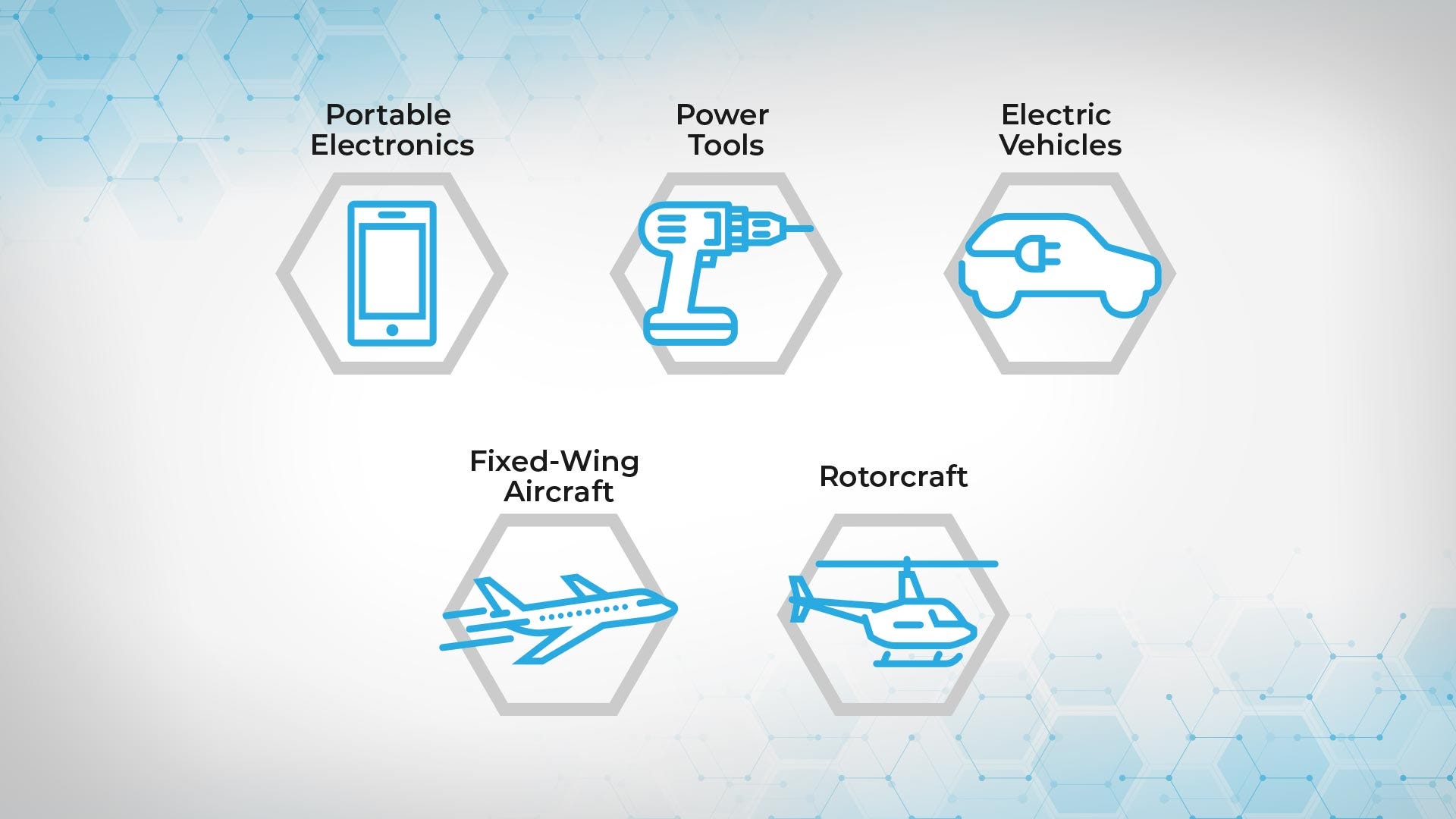
Understanding Lithium Battery Chemistries for Aviation
April 17, 2025
Choosing the right battery chemistry is essential for powering modern aircraft. True Blue Power’s lithium ion batteries are leading the way, but it’s important to note that not all lithium battery chemistries are the same. This article explains the key differences between lithium metal oxide (LMO) and lithium iron phosphate (LiFePO₄), focusing on their use in aviation. Let’s explore the science behind these chemistries and why True Blue Power batteries stand out as the safest and most reliable.
What Are Lithium Batteries?
Lithium batteries are a major breakthrough in energy storage, changing how we power devices. With their versatility and efficiency, lithium batteries are essential for everything from personal electronics to electric vehicles and aircraft. However, not all lithium batteries are created equal. They are divided into primary and secondary types, each with unique characteristics and uses. This distinction is important in industries like aviation, where safety and reliability are critical.

Primary Lithium Batteries
Primary lithium batteries are non-rechargeable and must be replaced when depleted. They use lithium metal, which stores a significant amount of energy but is highly reactive when they fail. These batteries are ideal for applications needing long shelf life and high energy density, but their reactivity creates safety risks.
Secondary Lithium Batteries
Secondary batteries are rechargeable and use lithium ions in solution rather than lithium metal. Two popular types of lithium ion chemistry are lithium metal oxide and lithium iron phosphate. Let’s take a closer look.
Lithium Metal Oxide
Lithium metal oxide batteries are widely used in consumer devices like smartphones, laptops, and hoverboards because of their high energy density and strong performance. While these traits make them a common solution for everyday use, they are also more volatile and can pose certain risks. Understanding how LMO batteries are made and how they behave is key to deciding if they’re suitable for specific applications.
What Is Lithium Metal Oxide?
Lithium metal oxide cells typically include compounds like
- Cobalt Oxide
- Nickel-Cobalt-Aluminum (NCA)
- Manganese-Cobalt (NMC)
Thermal Events
A major risk of LMO batteries is their tendency to overheat during events like short circuits or due to physical damage. Temperatures and pressure can spike significantly, compromising the battery’s structure and creating a fire hazard. This is referred to as a thermal runaway.
Oxygen Release
Another major risk of LMO batteries is their release of oxygen during failure. Extreme heat causes internal compounds to break down and produce oxygen. The heat and oxygen combine to create a self-sustaining fire that is difficult to extinguish, adding to the hazard.
Lithium Iron Phosphate
What Is Lithium Iron Phosphate?
True Blue Power lithium batteries utilize a proprietary lithium iron phosphate chemistry. LiFePO₄ batteries use iron phosphate as their main component, offering key advantages for aviation. Compared to lithium metal oxide battery chemistries, lithium iron phosphate is significantly more stable and less reactive.
Key Benefits of LiFePO₄ for Aviation
Enhanced Safety
Safety is the foundation of LiFePO₄ battery technology. In rare thermal events, these batteries primarily release carbon dioxide and other byproducts instead of oxygen, markedly reducing the risk of a serious event. Their maximum temperature is much lower than LMO batteries, and LiFePO₄ batteries do not produce flames. With this controlled response, LiFePO₄ batteries are a much safer choice for aviation.
Stability
Lithium iron phosphate chemistry is less reactive than LMO batteries and is ideal for applications with high safety demands. Their iron phosphate structure keeps them stable under extreme conditions and produces significantly lower temperatures if they fail. This stability is essential in aviation, where reliability and safety are key.
Cycle Life
LiFePO₄ batteries are known for their durability, lasting through thousands of charge and discharge cycles with little performance loss. They are a cost-effective and long-lasting choice for aircraft systems that need frequent power cycling, capable of handling 100% depth of discharge repeatedly.
Fast Charging
While traditional LiFePO₄ battery chemistries are not generally considered to have high power, True Blue Power utilizes a revised, patented formula which allows high discharge currents and fast charging. True Blue Power batteries are capable of charging in 30 minutes or less, allowing quick turnarounds between flights. This fast charging minimizes downtime and boosts efficiency.
Consistent Performance
LiFePO₄ batteries provide steady power throughout their charge, allowing operators to use 100% of the battery's capacity without losing performance. This is an important consideration for aircraft, where consistent energy is needed to power critical systems.
What Sets True Blue Power Apart?
True Blue Power LiFePO₄ batteries are tested to withstand a scenario in which all redundant levels of protection are disabled, and over-current/overcharge is applied. Even during a worst-case, all-cell thermal runaway, True Blue Power batteries are designed and tested to deliver 100% containment and direct any emitted gases outside the aircraft, away from the passengers or crew. Even during such a possibility, the maximum temperature of the battery stays significantly cooler than lithium metal oxide batteries, preventing ignition of any surrounding gases or components in the aircraft.
What This Means for Aviation
For pilots and aircraft operators, True Blue Power's advanced aircraft battery technology brings many benefits that go beyond standard performance metrics. The exceptional safety, durability and extended useful life of lithium iron phosphate batteries reduces maintenance, and operational and replacement costs. Even under the most demanding conditions, these batteries provide superior energy efficiency and full capacity utilization. True Blue Power lithium ion aircraft batteries are a trusted choice for modern aviation.
Looking for the best lithium ion batteries for your aircraft? Contact us.





